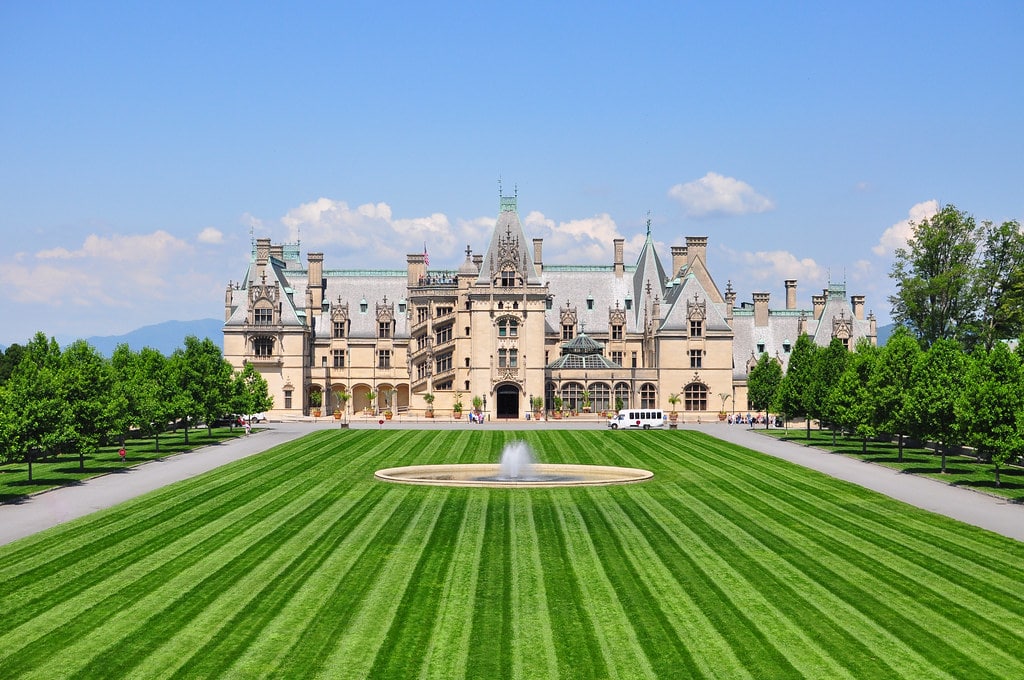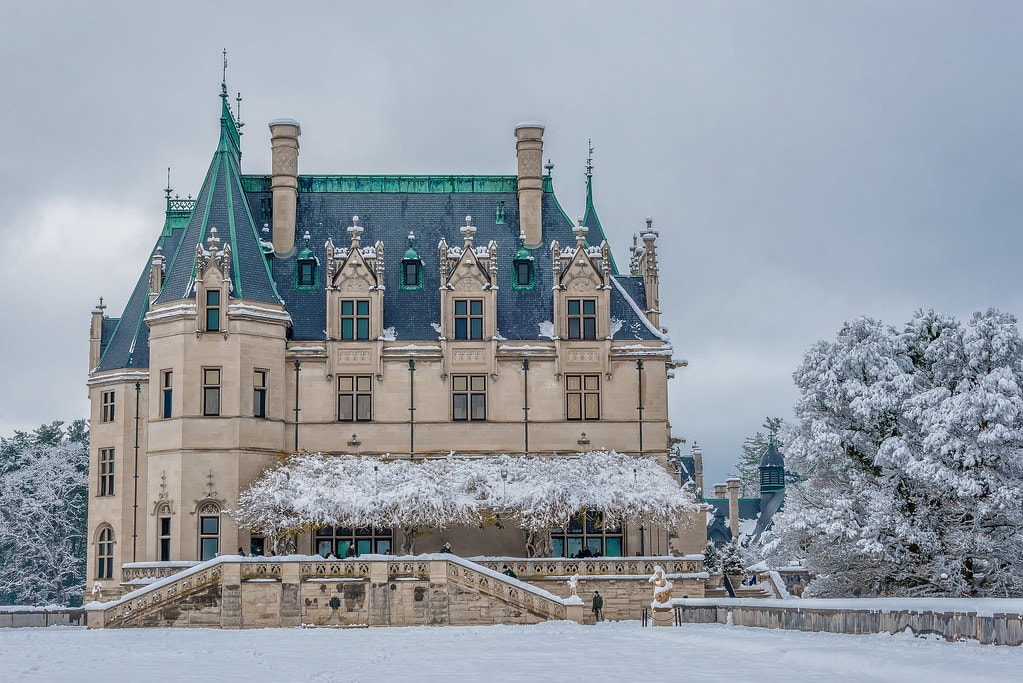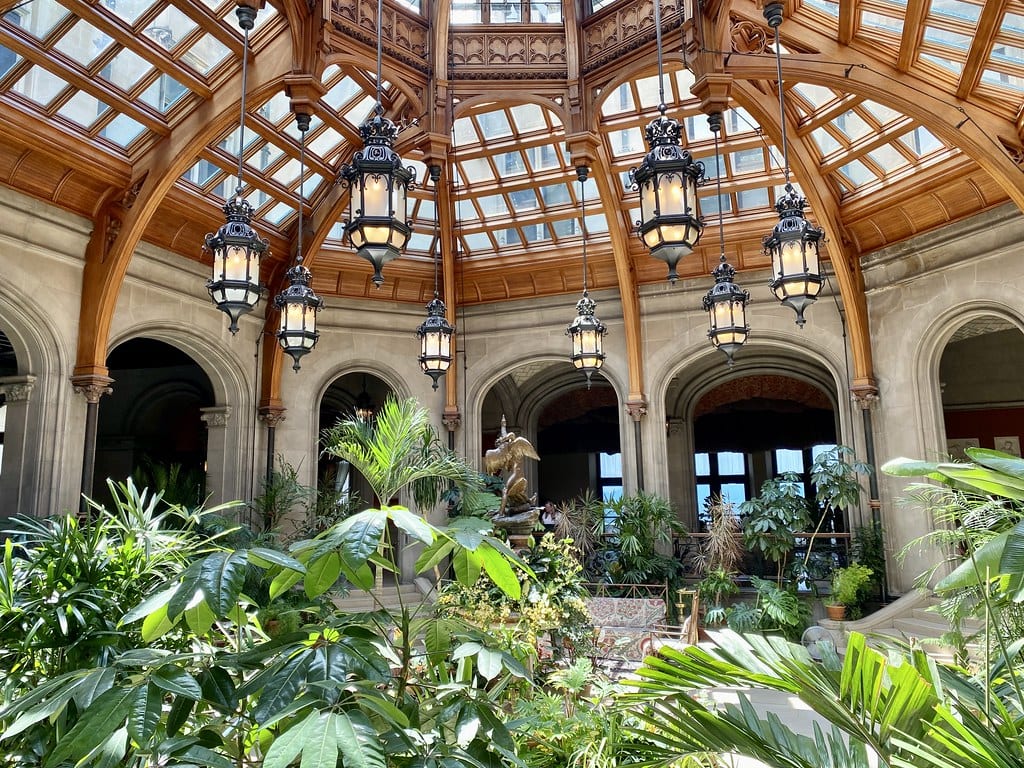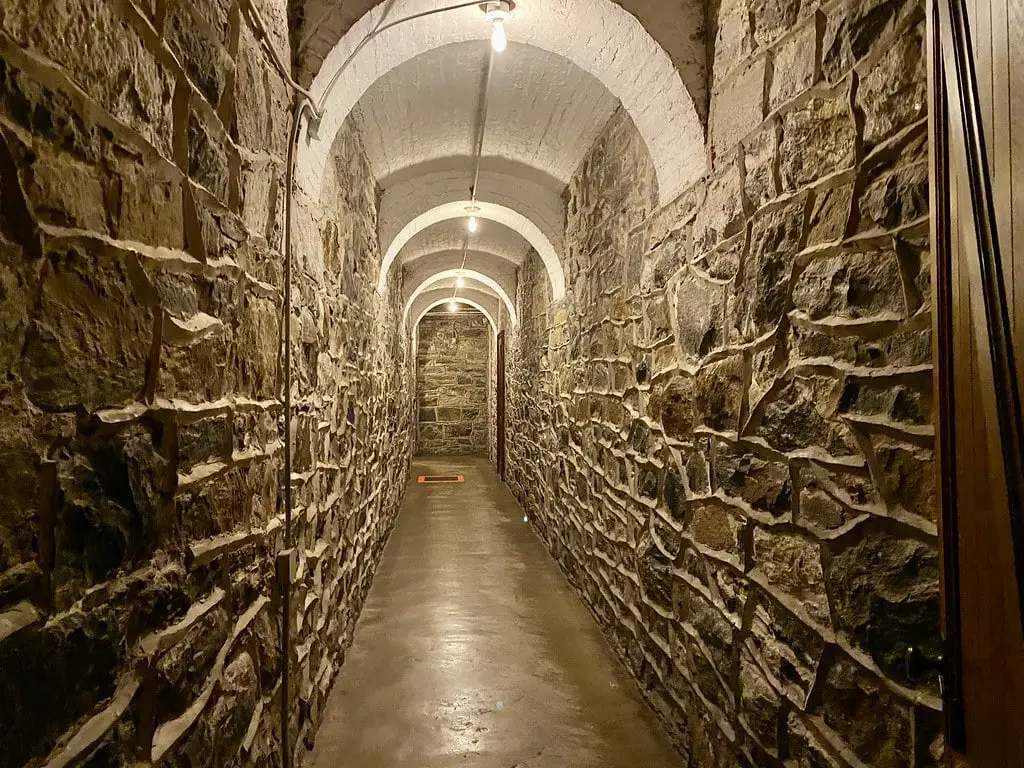Introduction to the Majestic Biltmore Estate
Nestled in the picturesque Blue Ridge Mountains of Asheville, North Carolina, the Biltmore Estate is a testament to America's Gilded Age.
Constructed between 1889 and 1895, this exquisite mansion, designed by renowned architect Richard Morris Hunt, represents the pinnacle of luxury and opulence from a bygone era.
Spanning over 8,000 acres, the estate was the brainchild of George Washington Vanderbilt II, who envisioned a lavish retreat blending the finest elements of European architecture and design.
Today, the Biltmore Estate, still owned by Vanderbilt's descendants, is the largest privately-owned home in the United States and a prominent symbol of American architectural and cultural history.
With its sprawling gardens designed by the famed landscape architect Frederick Law Olmsted and an array of things to do in Asheville, North Carolina, the estate continues to captivate visitors worldwide.
As of 2024, Biltmore's legacy endures, offering a unique glimpse into the lifestyle of the American elite during the late 19th century while also serving as a major tourist attraction and a hub for cultural events.
The Genesis of a Gilded Age Gem
Origins and Vision of the Biltmore Estate
In the late 1880s, the concept of the Biltmore Estate began to take shape in the mind of George Washington Vanderbilt II.
Inspired by the scenic beauty of Asheville, North Carolina, Vanderbilt embarked on a mission to create an American counterpart to the grand estates of Europe.
The estate's name, "Biltmore," was derived from "De Bilt," Vanderbilt's ancestors' Dutch hometown, and "more," an Anglo-Saxon word meaning open, rolling land.
This fusion of names symbolized the blend of European elegance and the vast American landscape that Vanderbilt aimed to achieve.
Land Acquisition and Planning
Vanderbilt's vision led to the acquisition of approximately 700 parcels of land, encompassing over 50 farms and several cemeteries.
The extensive property, once part of the community of Shiloh, was transformed into a luxurious estate.
The planning phase involved meticulous attention to detail, ensuring that every aspect of the estate would reflect Vanderbilt's grand vision.
Architectural and Landscaping Collaboration
The architectural design of the Biltmore House was entrusted to Richard Morris Hunt, a prominent figure in American architecture.
Hunt's design was influenced by the Châteauesque style, reminiscent of the grand French chateaux.
Complementing Hunt's architectural brilliance, the estate's landscaping was overseen by Frederick Law Olmsted, known for designing New York City's Central Park.
Olmsted's expertise in landscape architecture played a crucial role in shaping the natural beauty surrounding the mansion.

Constructing the Grandeur
Building the Biltmore House
The construction of the Biltmore House commenced in 1889, marking the beginning of a monumental six-year project.
A woodworking factory and a brick kiln capable of producing 32,000 bricks daily were established on-site to support this massive undertaking.
Additionally, a 3-mile railroad spur was constructed to facilitate the transportation of materials to the building site.
International Influence and Artistic Endeavors
During the construction, Vanderbilt embarked on extensive international travels to acquire decor and furnishings for his new home.
His journeys resulted in collecting thousands of artifacts, ranging from tapestries and carpets to prints and decorative objects, dating from the 15th to the late 19th century.
This collection showcased a blend of American practicality and European artistry, with items like oak desks and walnut pianos from the United States alongside European bronze candlesticks and wicker wastebaskets.
Labor and Craftsmanship
The construction of the Biltmore House required the labor of approximately 1,000 workers and 60 stonemasons, a testament to the scale and complexity of the project.
The craftsmanship and dedication of these workers were instrumental in bringing Vanderbilt's vision to life, resulting in a structure that was not only architecturally magnificent but also rich in artistic and cultural significance.
A Stage for High Society
The Biltmore as a Social Epicenter
Upon its completion in 1895, the Biltmore Estate quickly became a beacon of social activity for America's elite.
George Vanderbilt opened the doors of this magnificent mansion on Christmas Eve of 1895, hosting lavish parties and gatherings that attracted notable figures from across the country.
The magnificence of the estate, coupled with Vanderbilt's gracious hosting, established it as a favored retreat for distinguished visitors such as authors Edith Wharton and Henry James, diplomats Joseph Hodges Choate and Larz Anderson, and a few U.S. presidents.

Vanderbilt's Personal Life and Legacy
In 1898, George Vanderbilt married Edith Stuyvesant Dresser in Paris, France, further cementing the estate's status in high society.
Cornelia Stuyvesant Vanderbilt, their sole offspring, entered the world in 1900 within the opulent surroundings of the Biltmore Estate.
However, the Vanderbilt family faced challenges with the introduction of income tax and the high costs of maintaining such a vast property.
This led to the sale of 87,000 acres to the federal government, which later became part of the Pisgah National Forest.
Transition and Preservation
After George Vanderbilt's untimely death in 1914, Edith Vanderbilt managed the estate.
She sold Biltmore Estate Industries in 1917 and Biltmore Village in 1921, focusing on preserving the estate's core.
The Biltmore House ceased being a family residence in the mid-20th century but remained a symbol of the Vanderbilt legacy and American history.
Biltmore Through the Decades
The Great Depression and Public Opening
The economic challenges of the Great Depression in the 1930s led to a pivotal decision for the Biltmore Estate.
In 1930, at the request of the City of Asheville, Cornelia and her husband, John Francis Amherst Cecil, opened the estate to the public, aiming to boost tourism and economic activity in the region.
This marked a new chapter in the estate's history, transitioning from a private residence to a public attraction.

World War II and the Preservation of Art
During World War II, the Biltmore Estate played a unique role in preserving national treasures.
In 1942, the estate safeguarded valuable artworks from the National Gallery of Art in Washington, D.C., including pieces by Rembrandt and Raphael.
This initiative was a testament to the estate's commitment to cultural preservation.
The Cecil Family's Stewardship
Post-war, the Cecil family, descendants of the Vanderbilts, took over the management of the estate.
They focused on creating a sustainable and profitable venture, aligning with George Vanderbilt's original vision.
Under their stewardship, the Biltmore Company was formed, overseeing the estate's transformation into a self-sustaining enterprise.
This period saw the introduction of new attractions and amenities, including the opening of the Biltmore Winery in 1985 and the establishment of luxury accommodations like The Inn on Biltmore Estate in 2001 and the Village Hotel on Biltmore Estate in 2015.
Architectural and Artistic Marvels
The Châteauesque Masterpiece
The Biltmore House, completed in 1895, is a prime example of the Châteauesque architectural style, heavily influenced by French Renaissance châteaux.
Architect Richard Morris Hunt designed the four-story limestone building, incorporating steeply pitched roofs, turrets, and elaborate decorative elements.
The east facade, facing the Blue Ridge Mountains, showcases a 375-foot frontage, balancing asymmetry with aesthetic appeal.
The intricate details, from trefoils and gargoyles to grotesques, reflect Vanderbilt's desire for a European flair in his American estate.

Interior Design and Art Collection
The Biltmore's interior is as impressive as its exterior, boasting 250 rooms, including 35 guest bedrooms and 43 bathrooms.
The house features 19th-century novelties such as an electric Otis elevator and a call bell system.
The Banquet Hall's 70-foot high ceiling and the two-story Library, with over 10,000 volumes, highlight the estate's grandeur.
Artworks and furnishings collected worldwide adorn the rooms, including family portraits by John Singer Sargent and Giovanni Boldini and the Triumph of Virtue Over Vice tapestries.
Gardens and Grounds
Frederick Law Olmsted's landscaping genius is evident in the estate's 75 acres of formal gardens, including the Rose Garden, the Italian Garden, and the Conservatory.
The gardens feature a variety of flora, meticulously arranged to complement the estate's architecture and provide year-round beauty.
Olmsted's design included the Bass Pond and the Lagoon, adding water elements popular in Victorian landscaping.
Biltmore Today: Preservation and Innovation
Modern Attractions and Amenities
Today, the Biltmore Estate continues to evolve, offering a range of attractions and activities.
The Biltmore Winery, housed in the estate's former dairy barn, is a popular destination for wine enthusiasts.
The estate also features two hotels, The Inn on Biltmore Estate and the Village Hotel on Biltmore Estate, providing luxury accommodations for visitors.
Antler Hill Village, opened in 2010, offers dining, shopping, and entertainment options, enhancing the visitor experience.

Commitment to Preservation and Sustainability
The Biltmore Company, responsible for the estate's management, strongly emphasizes preservation and sustainability.
Efforts include maintaining the estate's historical integrity while incorporating modern practices in environmental stewardship.
This commitment ensures that the Biltmore Estate remains a relevant and responsible landmark.
Cultural Impact and Ongoing Legacy
As of 2024, the Biltmore Estate continues to be a major tourist attraction, drawing visitors worldwide.
Its cultural impact is significant, and various events and exhibitions celebrating its history and contemporary relevance are hosted.
The estate's enduring appeal lies in its ability to blend historic preservation with modern innovation, making it a unique and cherished American landmark.
The Enduring Legacy of Biltmore Estate
Reflecting on Biltmore's Historical Significance
As we look back on the history of the Biltmore Estate, it's clear that this architectural marvel has transcended its role as a private residence to become a symbol of American heritage and culture.
From its inception in the late 19th century to its current status as a cherished landmark, Biltmore has witnessed and adapted to various historical epochs while maintaining its grandeur and elegance.
Biltmore's Role in American Culture
The Biltmore Estate is more than just a testament to the Gilded Age; it is a living museum that offers insights into the past and present. Its ability to attract millions of visitors yearly speaks to its relevance and appeal.
The estate serves as a bridge between the past and the present, offering a window into the lives of the American elite at the turn of the century while continuing to evolve and resonate with contemporary audiences.

Looking Forward
In the 21st century, the Biltmore Estate stands poised to continue its legacy. Its commitment to preservation and willingness to innovate ensure it will remain a significant and beloved destination.
The Biltmore Estate's story is one of vision, resilience, and adaptation, qualities that will undoubtedly carry its legacy forward for future generations.
